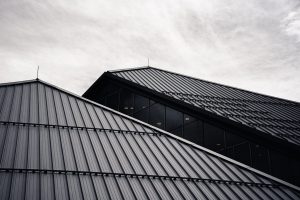 From the point of view of construction terminology, the roof is a structural element of the upper part of building structures and protects these structures from both mechanical influences and from entering the premises of precipitation. Also, it is the roof that gives homes, especially private ones, individuality.
From the point of view of construction terminology, the roof is a structural element of the upper part of building structures and protects these structures from both mechanical influences and from entering the premises of precipitation. Also, it is the roof that gives homes, especially private ones, individuality.
Roof construction
The main elements:
- a slope or inclined surface;
- the ridge (or section of a slope) is the horizontal and inclined edges of a slope;
- grooves (entrance corners) – are located at the intersection of the slopes;
- cornice and front overhang – the edges of the roof, located directly above the walls of the building;
- water intake funnels drains and drainage pipes.
Solid slabs or lattices act as a basis. They are usually laid on top of the load-bearing elements of the roof: rafters or beams.
The roof is mounted on top of this base, and it can be used:
- profiled metal sheets;
- natural or flexible tile;
- roofing material;
- some natural materials: shingles or reeds.
Classification of materials
Depending on the design features the roofing can be artificial or rolled. This classification is determined by the type of raw material used in its manufacture:
- organic materials – wood, bituminous, polymeric, or tar roofs;
- based on silicates – asbestos cement and tile;
- metal – roofing steel.
Thus, all options for the roof of a house are complex systems consisting of many elements. Installing a roof using one of the above types of materials means not just laying the chosen coating on the roof surface, but thoroughly planning all stages of the work, taking into account the functional and operational nuances of both the materials and the foundation on which the roof will be installed.
The main functions
Perhaps the most important function of the roof is to protect the roof and interior of a home from various natural influences: wind, rain, snow, or hail. The choice of roofing should be made in strict accordance with the technical characteristics of the base, so another function of the roof – protecting the house from high loads – is also important.
Due to their structure, small-format, scaly, and natural roofs can withstand repeated temperature fluctuations. Due to this, the interior of the house maintains a stable microclimate: in winter the house is warm, and in summer – cool. Also, in the modern format, the materials for the roof of the house can provide the building with fire safety, ie the risk of rapid ignition is eliminated. Also, modern types of roofs significantly reduce the effects of ultraviolet and thermal radiation, as well as withstand various external and internal influences – such as condensation or noise.
Due to its technical and operational characteristics:
- provide private buildings with architectural individuality;
- to improve the strength of the roof.
The practicality of the use of modern roofing materials is fastened also by the fact that full or partial repair of a covering repair of bearing designs is possible also. This is especially important for private housing, which is more than a few decades old.
Types
Depending on the type of materials used:
- Bituminous – in the form of soft and flexible shingles, which is suitable for any configuration of roofs. The durability of this material is ensured by a multilayer structure.
- Polymer – in the form of rolled roofing materials based on polymers and fiberglass. Used on both pitched and flat roofs.
- Copper – houses covered with this type of roofing are respectable, individual, and noble. The material is suitable for use on roofs of any degree of complexity.
- Galvanized – this category includes metal, corrugated, and galvanized steel. These materials are rigid and resistant to corrosion.
- Wooden – larch or oak are used to arrange such a roof, the wood of which has high strength and excellent appearance.
- Aluminum – used on all types of roofs and is lightweight, durable, and longevity.
Regional climatic conditions are especially important when choosing a roofing material. For example, in rainy and windy areas, roofs have a steep slope and a small overhang, and in areas where there is a high level of precipitation in winter, there are common structures with a large overhang and a gentle slope. Also, the occurrence of certain roof forms may be affected by the purpose of the building.
Picture Credit: Unsplash
